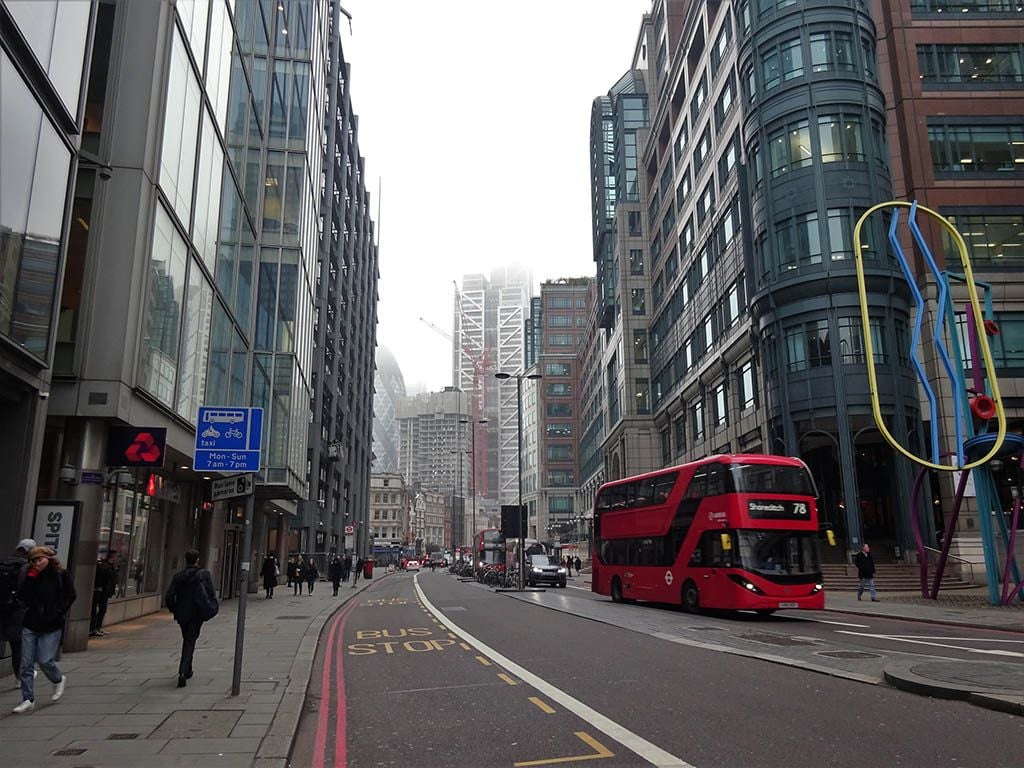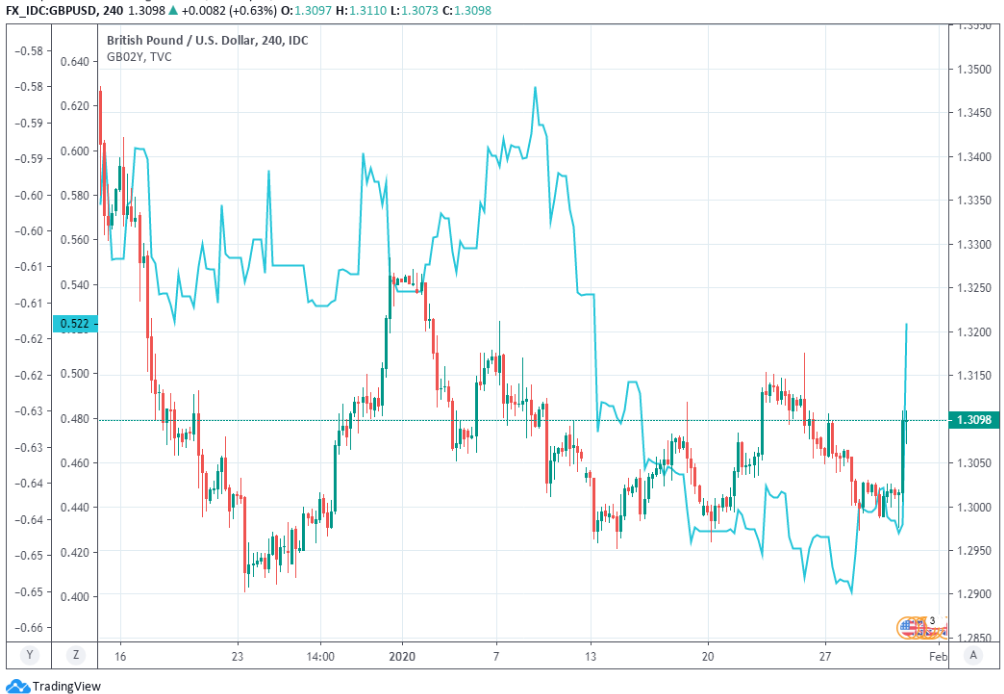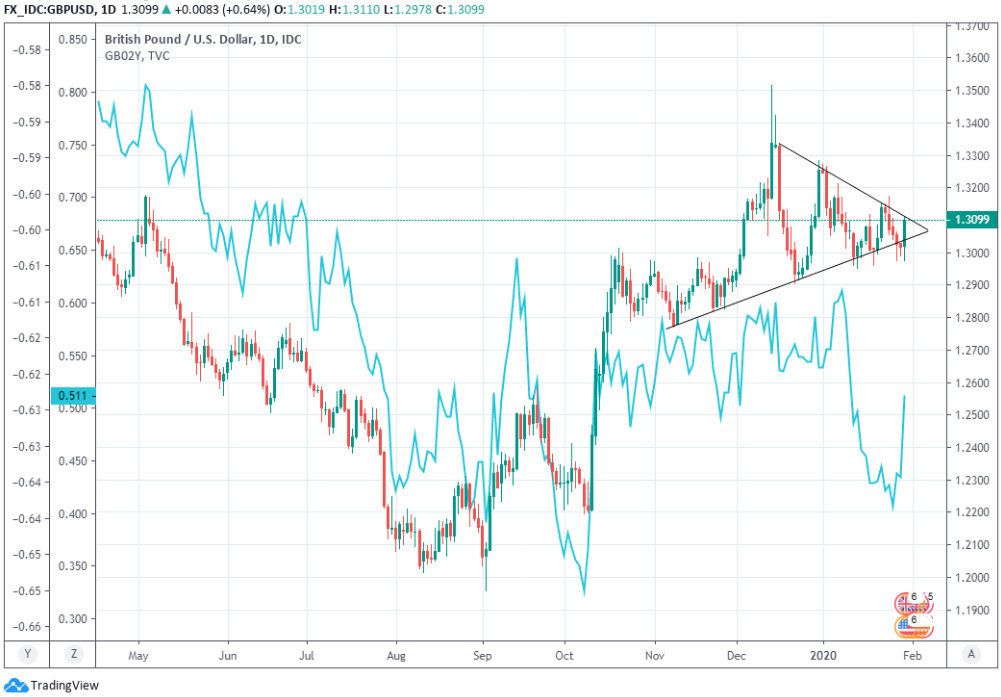The Pound-Dollar Rate Is Up for Auction Already amid Questions Over Sustainability of Rally
- Written by: James Skinner
- GBP strongest performing major after BoE holds Bank Rate.
- After knife-edge decision amid evolving global environment.
- GBP gets respite from averted rate cut but USD to strengthen.
- USD, safe-havens only beneficiaries of wild card coronavirus.
- GBP/USD likely to unwind Thursday's gains in coming days.
- Saxo Bank retains open mind, for now, as Nomura says sell.

Image © David Holt, Accessed: Flikr, Licensing Conditions: Creative Commons
- GBP/USD Spot rate: 1.3101, up 0.62% today
- Indicative bank rates for transfers: 1.2742-1.2834
- Transfer specialist indicative rates: 1.2904-1.2983 >> Get your quote now
The Pound rose strongly off a key line of support against the Dollar Thursday after being boosted by January's Bank of England (BoE) interest rate decision although multiple institutions have already put the British currency up for sale due to doubts over the sustainability of the rally.
Sterling rose 0.57% against the Dollar Thursday as British bond yields surged after the BoE left Bank Rate unchanged at 0.75% in what was seen by the market as a knife-edge decision. British yields were rising as their U.S. counterparts plumbed new lows amid increased safe-haven demand at the global level, although the Pound-to-Dollar rate's up move has underwhelmed in comparison to gains made by Sterling over some of its riskier rivals like the smaller Dollars of Australia and New Zealand.
And already some are selling the Pound-Dollar rate at current levels, citing a number of reasons, while others are also mulling the idea.
"Not to cut today – a move that was nearly guaranteed to trigger a knee-jerk reaction," says John Hardy, chief FX strategist at Saxo Bank. "Traditionally not a currency that does well in a backdrop of wobbly global markets, and after a strong speculative build of late in speculative GBP longs, we keep our eyes out for whether this move is sustained higher – with an open mind, but ready to look for a short bias on a failure back toward the 1.3000 level or lower."
Above: Pound-to-Dollar rate shown at hourly intervals alongside 2-year GB government bond yield (blue line, left axis).
Monetary Policy Committee (MPC) members voted by 7-to-2 to leave Bank Rate unchanged at 0.75% when five of the nine-strong committee had previously indicated they could vote for a cut to 0.50% this month. However, the bank left the door open to a rate cut in the coming months amid a challenging international backdrop for so-called risk currencies, which Sterling is one of.
The decision came despite downgrades to the BoE's UK economic forecasts that have left policymakers looking for slower GDP growth throughout the current year, wing mainly to the anticipation that net exports will weigh heavier on the economy than previously thought. Meanwhile, the number of new novel coronavirus infections has continued to increase, with the deadly disease now present in at least 19 countries other than China.
"Green shoots in UK data remain, the BoE is unlikely to cut rates in coming months. Both would typically argue for a stronger pound," says Jordan Rochester, a strategist at Nomura. "We expect GBP outperformance. But versus the USD it’s a different outlook because of the rising concerns over the virus outbreak in China and the drag on global growth it may cause."
Above: Pound-to-Dollar rate shown at 4-hour intervals alongside 2-year GB government bond yield (blue line, left axis).
The Centers for Disease Control & Prevention (CDC) said Thursday there are now six confirmed cases of the disease in the U.S. including one case of a human-to-human infection. And markets are still waiting to hear if or when the World Health Organization will declare a global emergency after reconvening a panel that said such a thing is unneccesary earlier this week.
The International Health Regulations Emergency Committee on the new #coronavirus (2019-nCoV) has reconvened today.
— World Health Organization (WHO) (@WHO) January 30, 2020
Read more about the Emergency Committee
????https://t.co/Qtsxqkr7xi pic.twitter.com/a0lxcBVWDk
Coronavirus has now infected more people than the 'SARS' strain of it did in 2002-2003, which hampered global growth at a time when China was a much lesser component of the global economy.
It's also now in all 31 of China's provinces, with numbers of infected, "serious cases" and deaths all rising by double-digit percentages each day this week.
"These all come at a time when the market already has long GBP/USD positions in place (historically high too)," Rochester says. "This will require more “good news” to keep the price action sustained."
Above: Pound-to-Dollar rate shown at daily intervals alongside 2-year GB government bond yield (blue line, left axis).
Just received a briefing on the Coronavirus in China from all of our GREAT agencies, who are also working closely with China. We will continue to monitor the ongoing developments. We have the best experts anywhere in the world, and they are on top of it 24/7! pic.twitter.com/rrtF1Stk78
— Donald J. Trump (@realDonaldTrump) January 30, 2020
Chinese cities are turning to ghost towns as the public isolate themselves to avoid infection. That explains in large part why a government economist said on Wednesday that GDP growth could fall below 5% this quarter, from 6% previously - a slowdown that'd likely be felt far beyond China's borders.
China's National Health Commission (NHC) said Thursday that as of 24:00 on 29 January it was aware of 7,711 confirmed cases of the super-pneumonia-like disease, up from 5,974 the previous day and up from 291 on January 21. Severe cases were at 1,370, the number of suspected cases was at 12,167 and the number of individuals "undergoing medical observation" had risen to 81,947. That's according to Yandex translations of NHC statements.
"We still expect GBP to finish the year higher but expect the recent market risk off to continue for the time being," Nomura's Rochester says.






